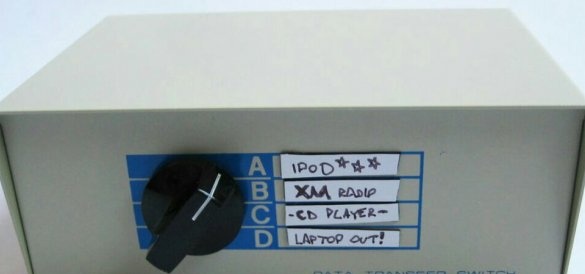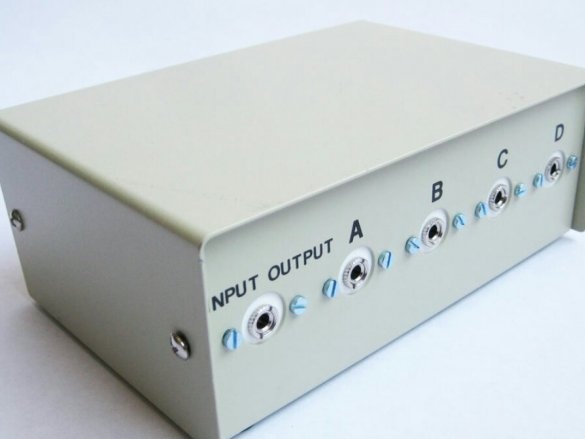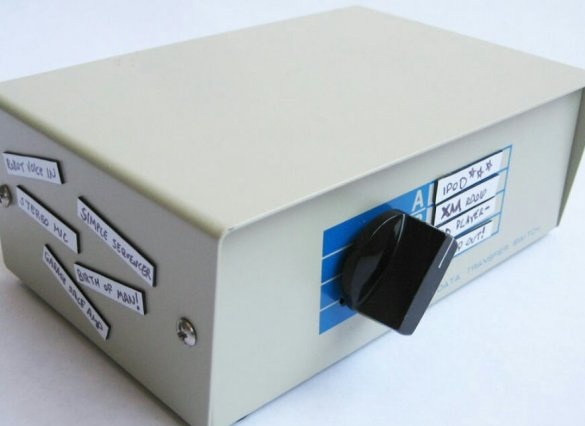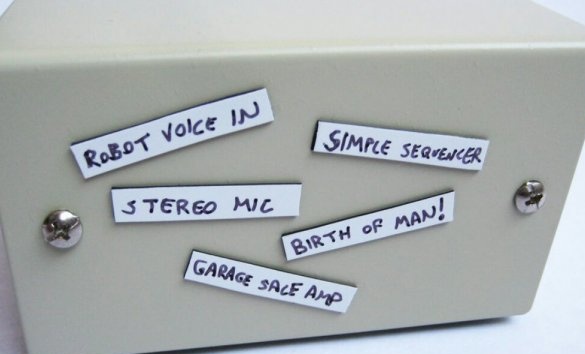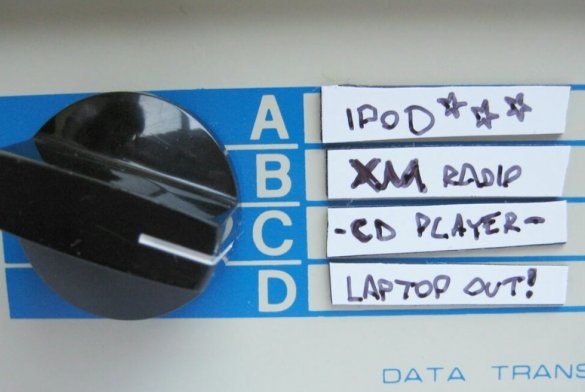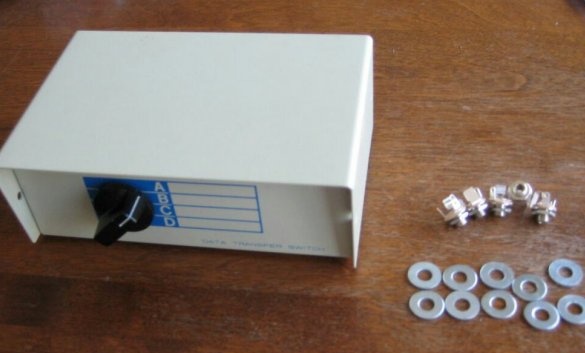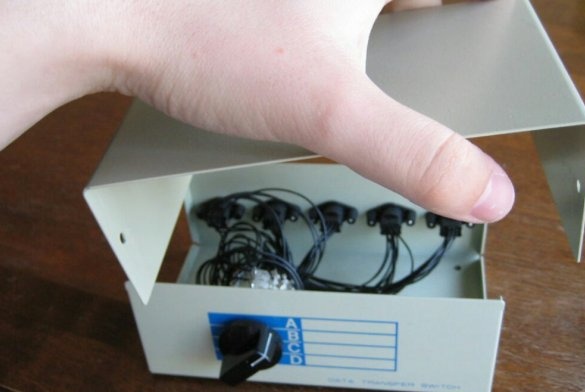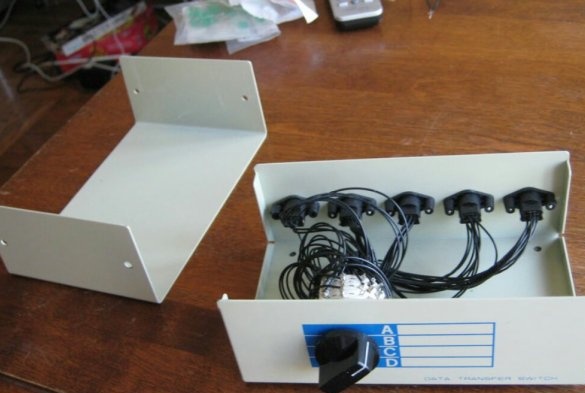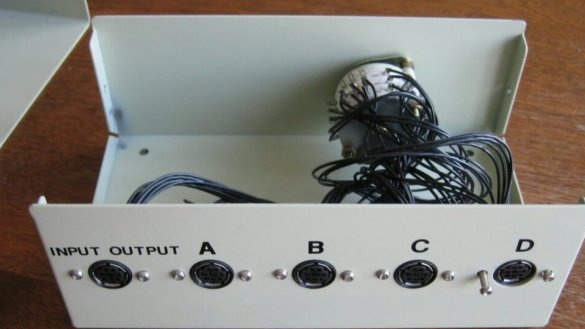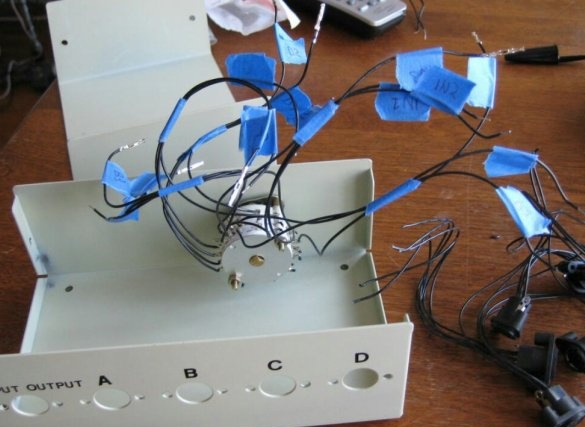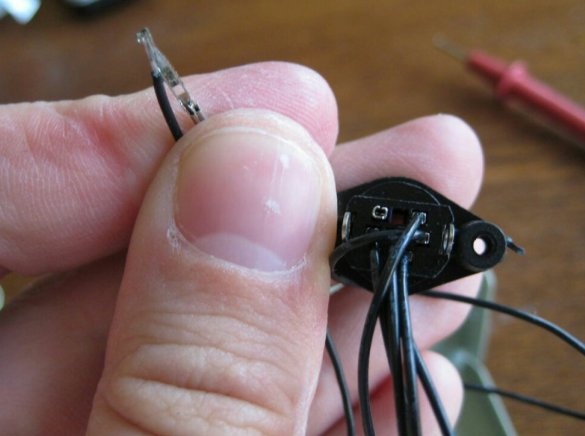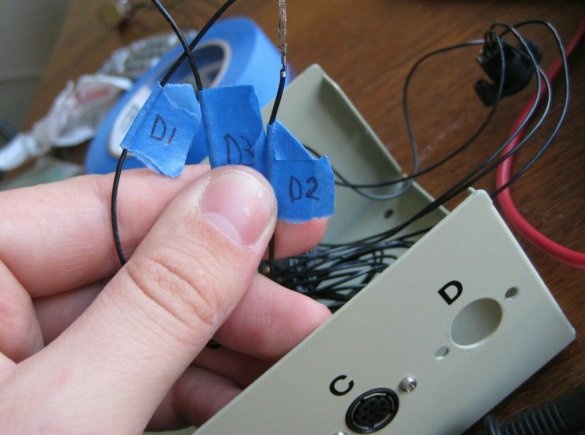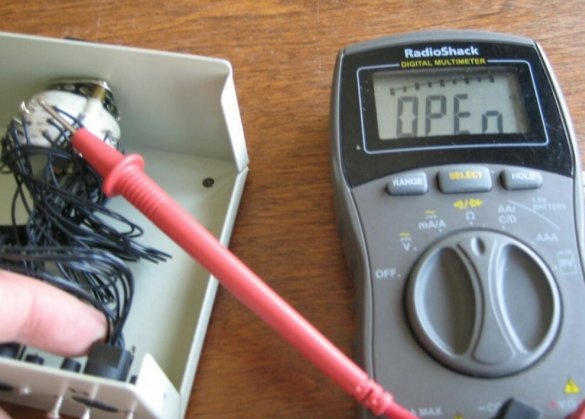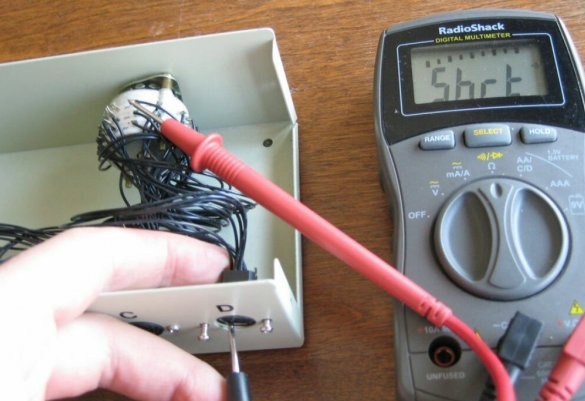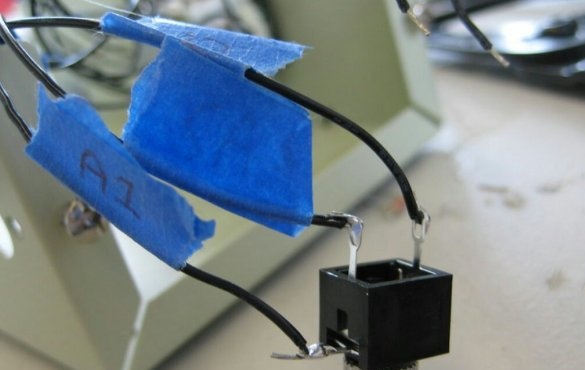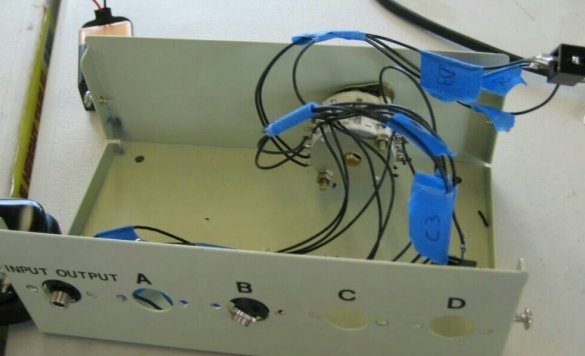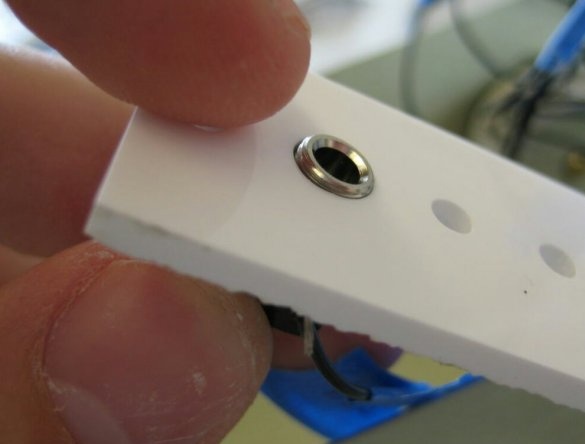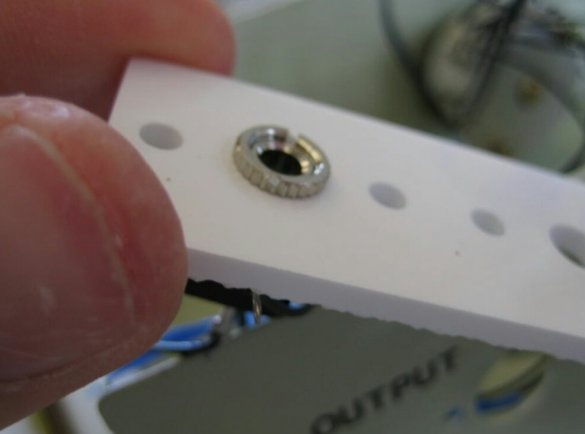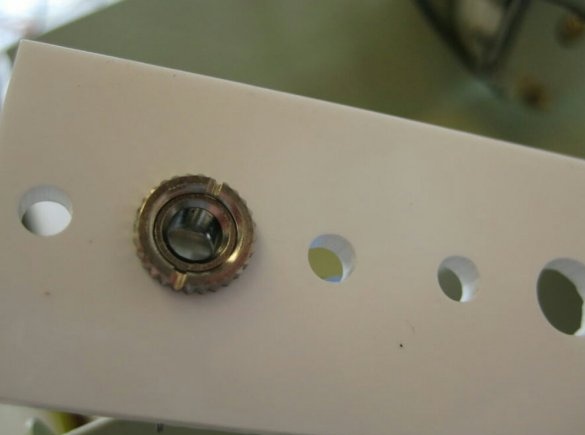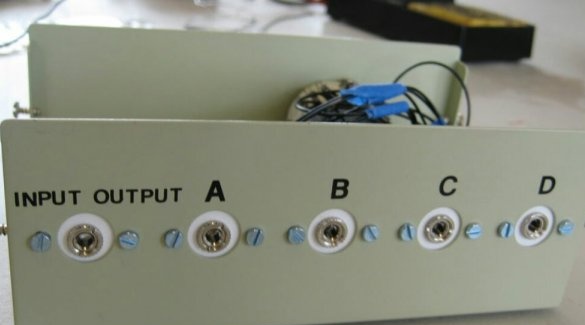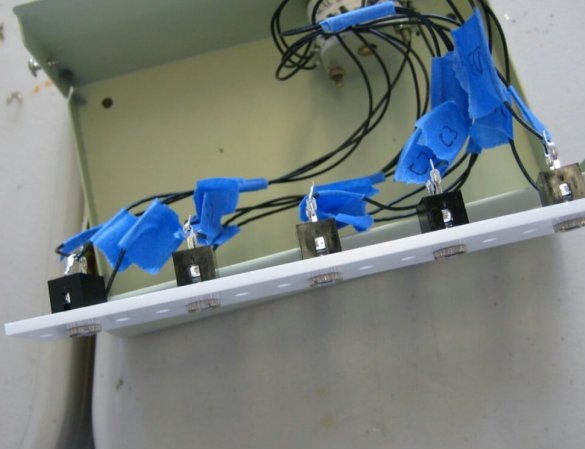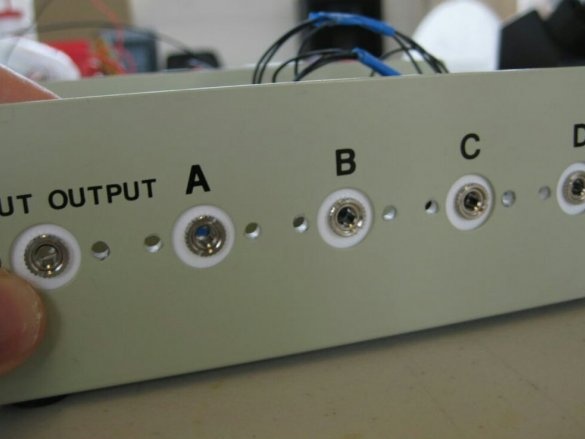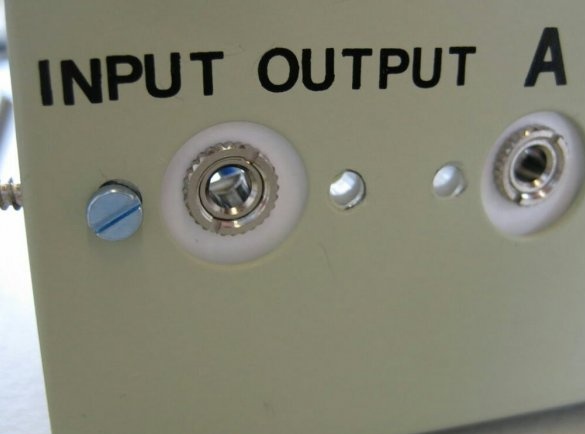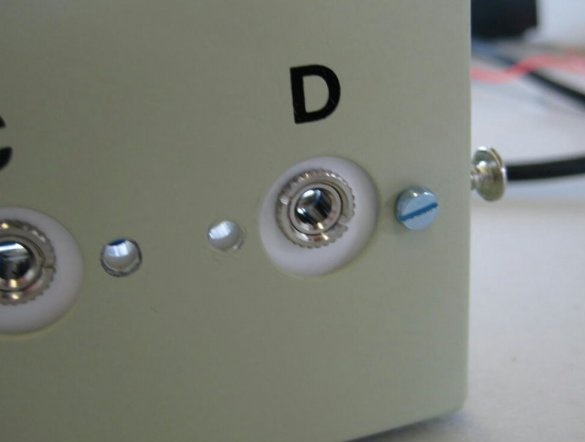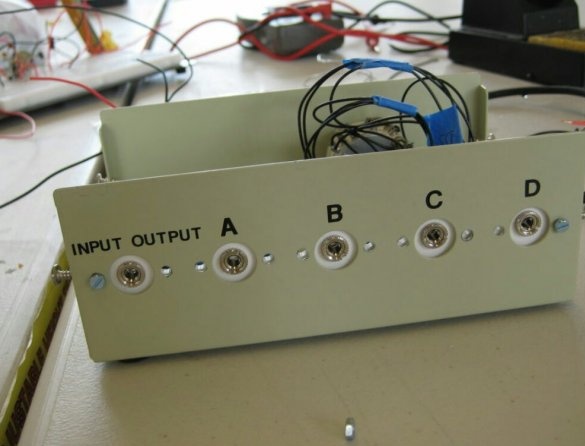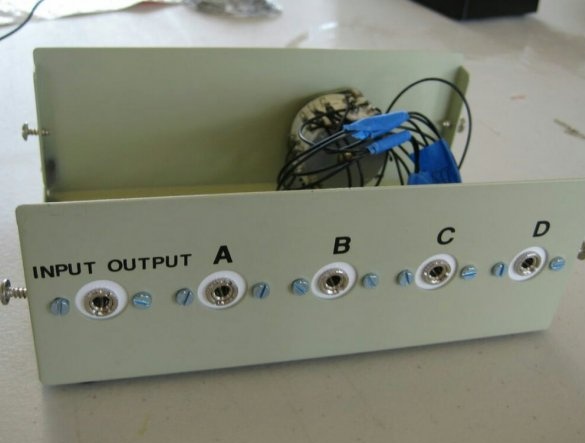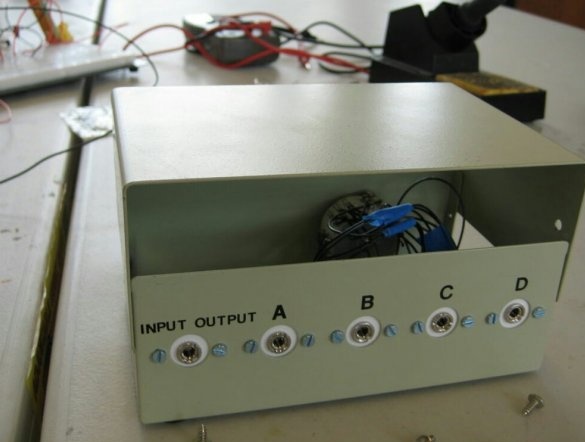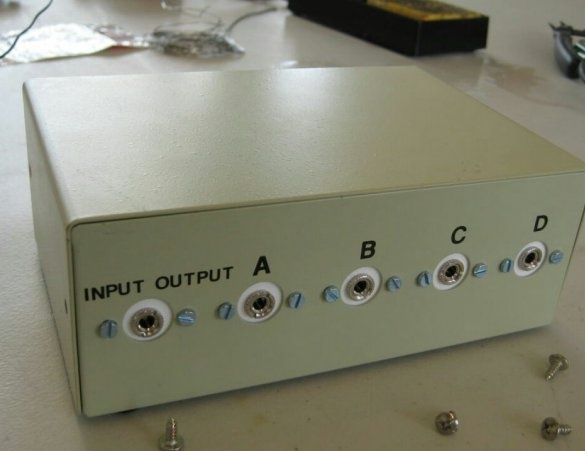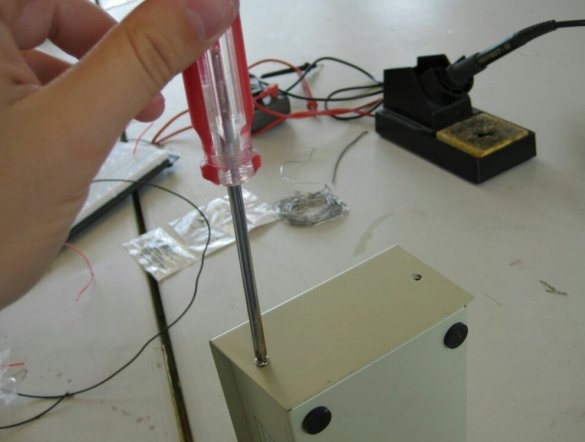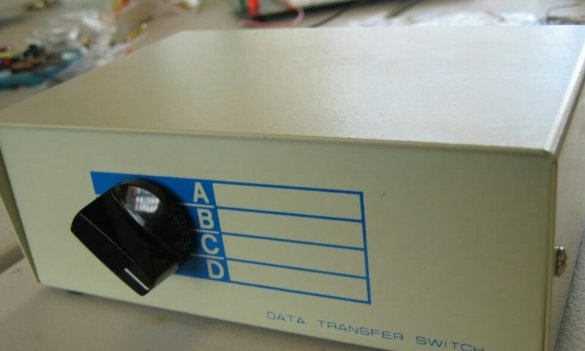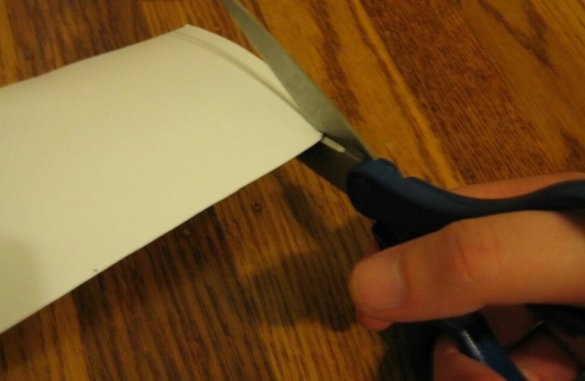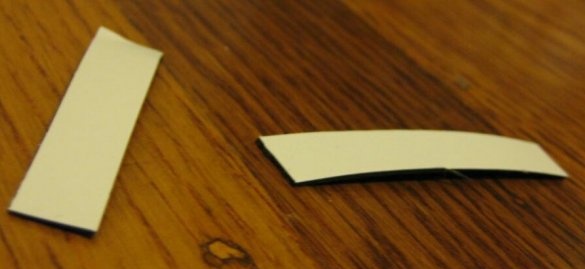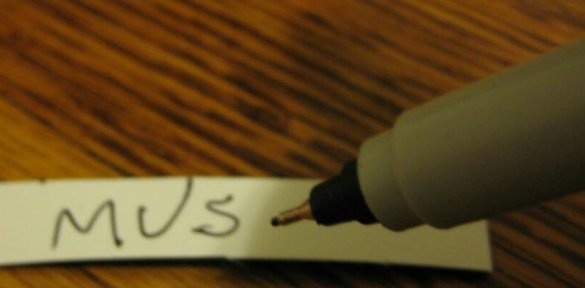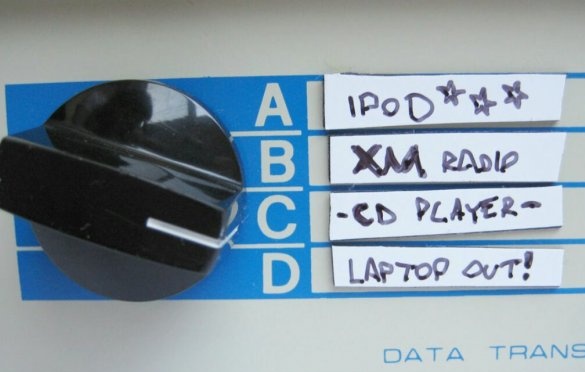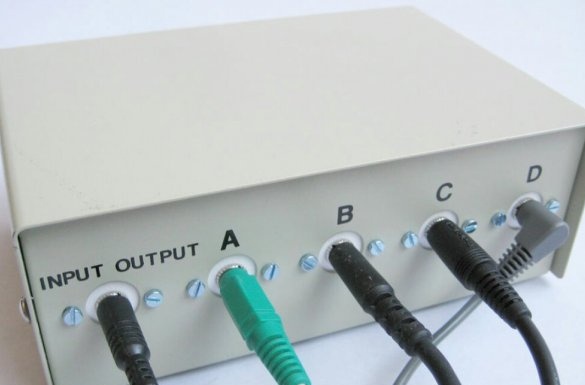The author of Instructables under the nickname randofo used the switch of peripheral devices connected to the same COM port for its intended purpose. With the advent of USB, hubs replaced the switches, thanks to which several devices on the same port do not work sequentially, but simultaneously. And the master found a new application for the vintage object - as a switch of audio sources connected to the input of an amplifier. Such a device is called an input selector. Together with homemade the amplifier forms an analogue of the once popular type of audio equipment - an amplifier-switching device, abbreviated as UCU.
Since the user can periodically change the signal sources connected to the inputs of the selector, the master has provided magnetic labels, which, unlike stickers, can often be rearranged without wear:
To remake the switch, you need five stereo audio jacks - “jacks”, one of which will be input, and the remaining four - output. We also need 10 washers, or a plastic strip with holes not shown in the next photo. We will see her later.
The master removes the top cover from the switch housing:
And there is not even any electronics there. Connectors and biscuit - solid electrics. Neither semiconductors nor lamps are the kingdom of dry contacts. And food is not required. The master leaves the gallenik in place, trying not to tear a single wire from its petals:
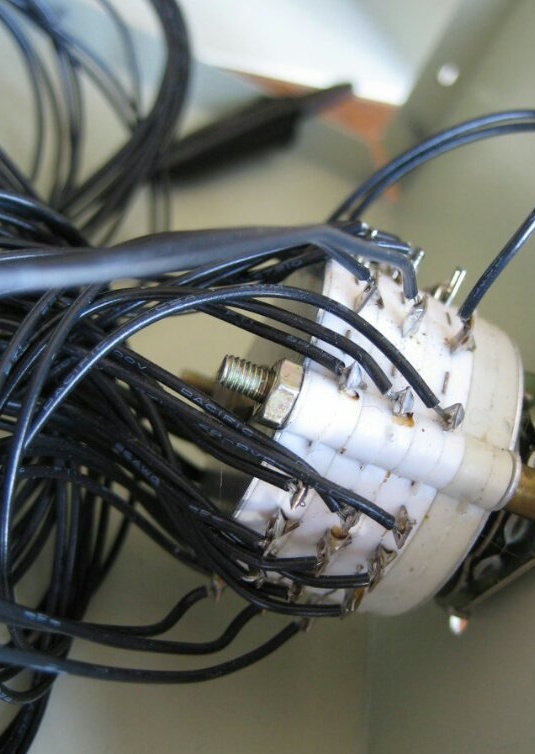
And the connectors are unscrewed from the case to replace with others:
Then it disconnects the conductors from the connectors one at a time:
At the same time marking where they were going:
Just in case, then the master checks himself, ringing the chains at different positions of the biscuit and making sure that each of the conductors connected to the biscuit input, when changing its positions, is connected to the corresponding output:
How to connect the audio jacks now, it’s clear - two stereo channels and a common wire. True, the translator is not sure of the need to commute the common wire.
The problem is that the holes on the back of the device are too large in diameter:
And a plastic bar with holes cut by a laser is called upon to solve it (file here):
There is no way to cut with a laser - just print a picture in a 1: 1 scale on paper (in the absence of a "king of firewood" the file will also open Inkscape), stick it on plastic, cut it out and drill it. And you can just fix the "jacks" in the holes with washers. But the master chooses a difficult way. It places the audio jacks in the corresponding holes of the strip:
And the bar itself is fastened through other holes from the inside to the body:
The wizard returns the cover to the case, and the input selector is ready for operation:
Next, the master takes a sheet of PVC with a flexible magnet on the back and cuts the marks. In our conditions, flexible advertising magnets from the Iceberg repair company are suitable for this if paper is glued to the front of them.
On labels, the wizard writes the names of various audio sources:
Those of the labels that will be used at the moment are placed on the front panel in places corresponding to the positions of the handle of the biscuit:
And finally, it connects audio sources and an amplifier to the input selector, having turned off all this beforehand (it is not recommended to make “hot” switching of connectors because of possible small leaks in the power supply units).
Now you can turn on the signal sources and amplifier, check how the device works, and start using it. Sources should produce signals of approximately the same amplitude, and the input of the amplifier should be designed specifically for such an amplitude.

